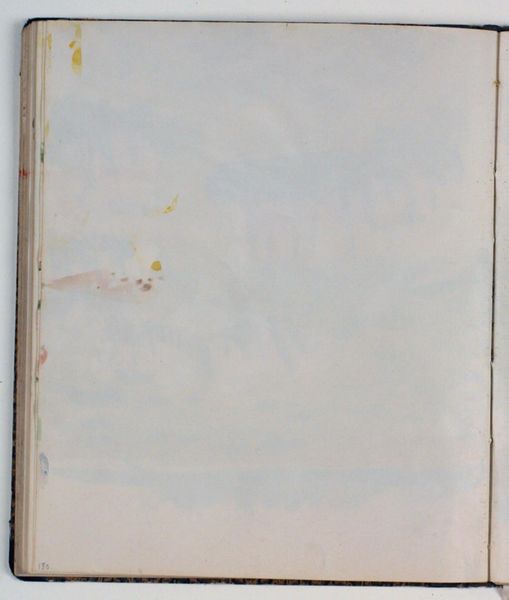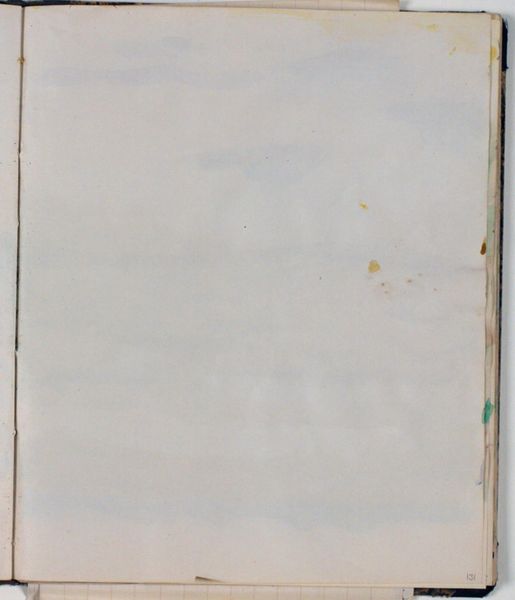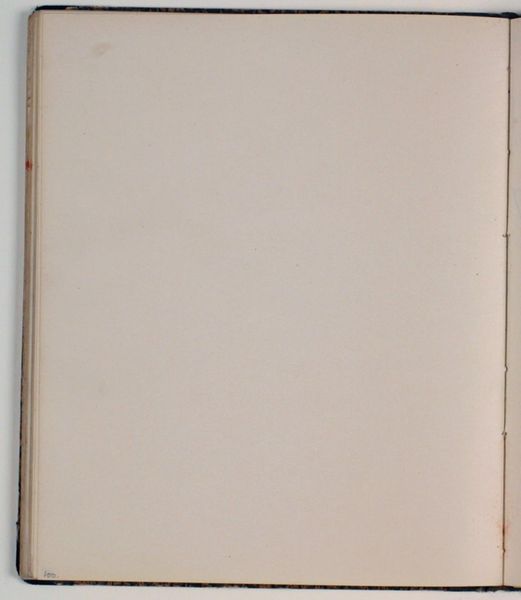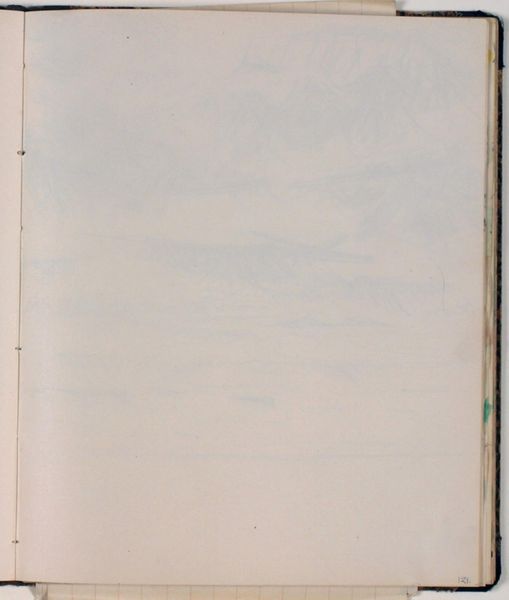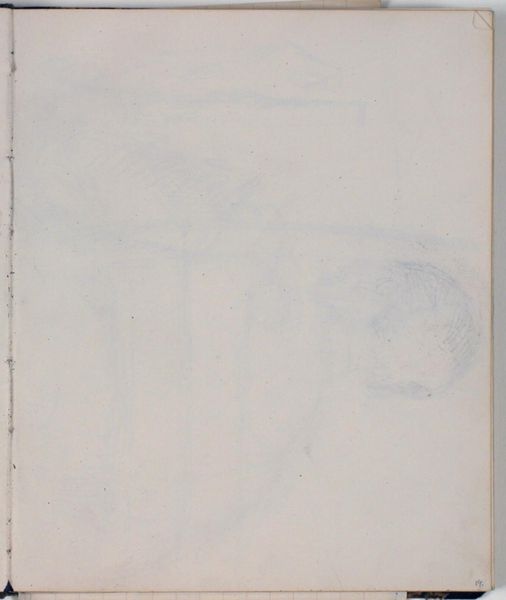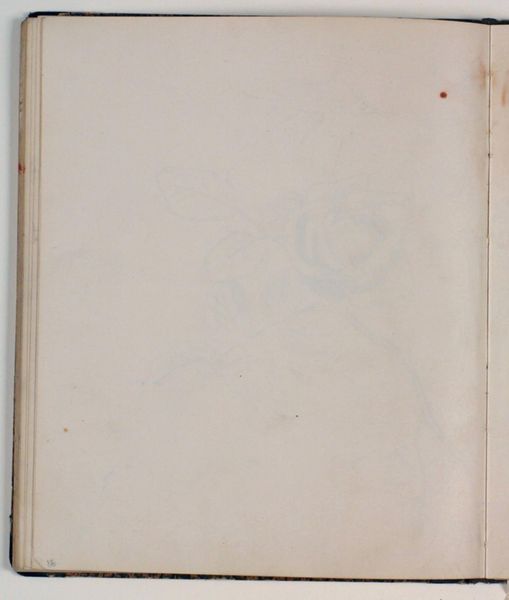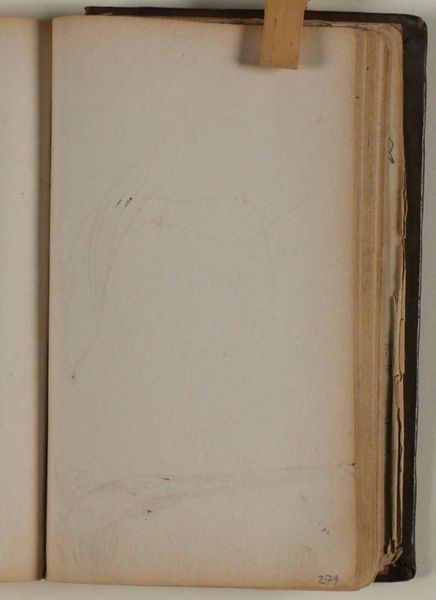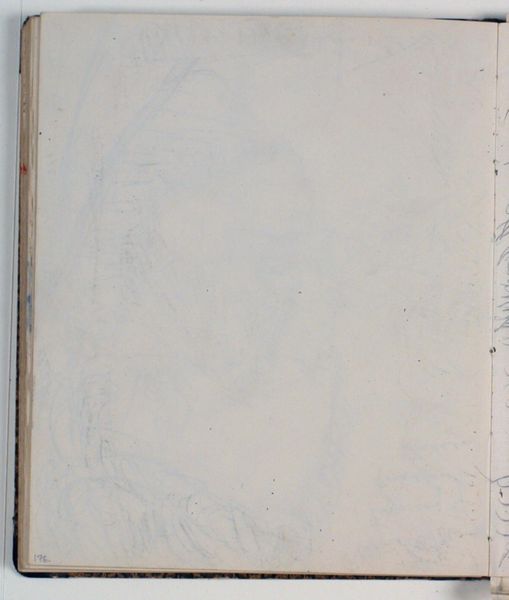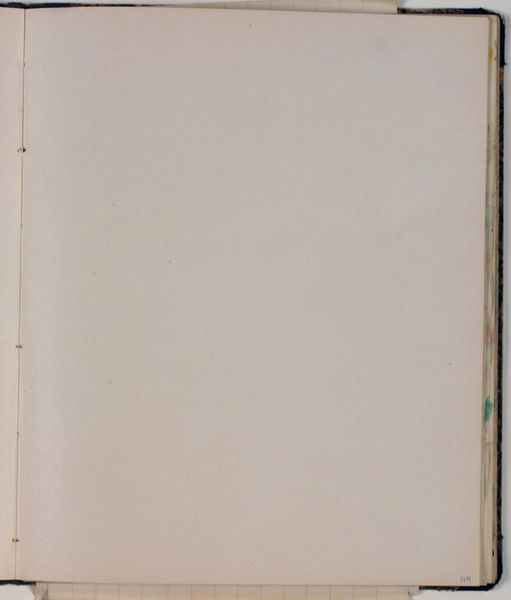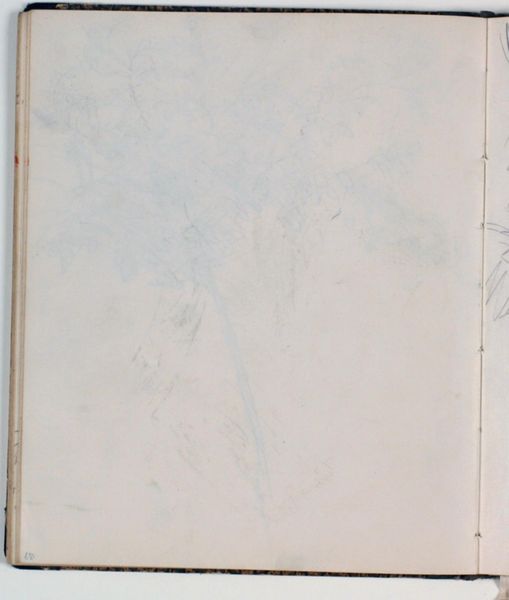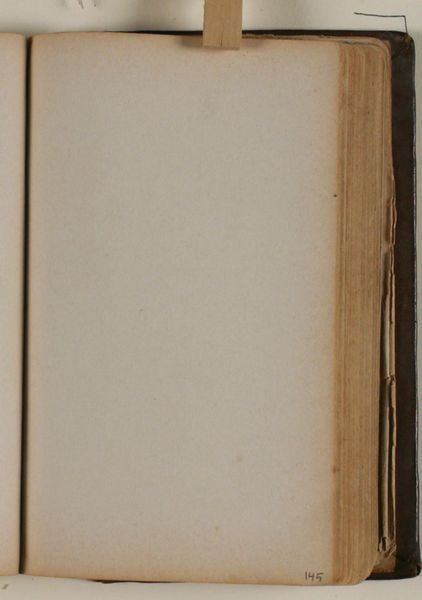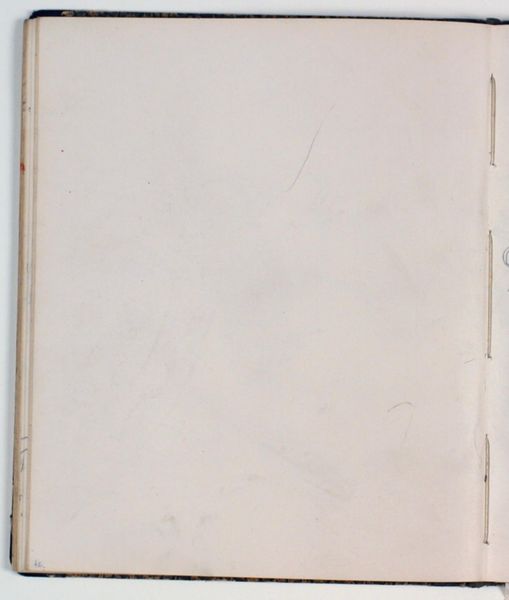
drawing, paper, watercolor
#
drawing
#
water colours
#
paper
#
watercolor
#
coloured pencil
#
abstraction
#
monochrome
Dimensions: 226 mm (height) x 185 mm (width) x 112 mm (depth) (monteringsmaal), 221 mm (height) x 184 mm (width) (bladmaal)
Curator: We’re looking at "Blank," a piece by Niels Larsen Stevns, likely created sometime between 1930 and 1936. It’s currently held at the SMK, the Statens Museum for Kunst. Editor: My first impression is… emptiness. It's like a pale sky just after dawn, a hint of color but mostly a vast, silent space. I wonder what kind of paper he’s using; you can see a visible texture even through the faint watercolor. Curator: Indeed. It's part of a sketchbook, so it speaks to the artist’s process, the everyday act of observing and recording, regardless of a finished piece. This "emptiness" can be potent, challenging the viewer's expectations of what constitutes a complete artwork, considering art production in that era and its established conventions. Editor: I'm interested in this term 'Blank.' What statement do you think Larsen Stevns makes when calling something "Blank?" Was he maybe using that title as an attempt at the demystification of art, making it approachable through a very direct encounter with artmaking? There are faint lines and blotches; what do we know about the watercolor or the colored pencil he might be working with? I think the materials used really dictate the final mood here. Curator: The socio-political backdrop might add an angle: a period marked by economic uncertainty and brewing global conflict. Was "Blank" maybe a deliberate rejection of grand narratives? Instead focusing attention on the mundane, highlighting its aesthetic worth to provide solace, especially as we find it on watercolours? This makes the artwork relevant. Editor: The translucency created with watercolors, juxtaposed with that slightly textured paper, hints at experimentation in its making, and the paper as an available material during hard times; the sketchbook implies it could be reused later, almost a constant act of labour towards something. The use of water, which itself is such a versatile agent. It gives the viewer access into Stevns' approach. Curator: This work challenges preconceived notions of artistic worth, reminding us to seek and question established practices to value a new vision with time and work and social forces that may have dictated the value or even the theme for the author. Editor: Precisely, in essence, it’s almost an invitation for the viewer to consider the labor of art and what we might bring ourselves in understanding it better.
Comments
No comments
Be the first to comment and join the conversation on the ultimate creative platform.
